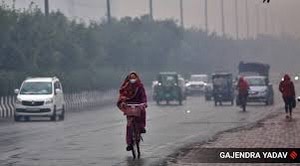First two weeks among the hottest, second two weeks among the coldest
Temperatures in March 2023 have been drastically different from historical norms. The first two weeks of the month were among the warmest, while the second half was among the coldest, putting the entire month in the top ten coldest Marchs in the previous 73 years.
According to the India Meteorological Department's (IMD) gridded dataset, the average highest temperature in India up to March 29 was 30.35 degrees Celsius. This is 0.96 degrees below the 1981-2010 average for this interval, which the IMD considers normal, and the 12th coolest year since 1951, the first year for which the IMD has gridded statistics. This is the polar opposite of February's maximum temperatures, which were the 13th hottest since 1951.
To be clear, the start of the month did not imply a cool March. On February 28, the IMD issued a forecast for the March-May period, predicting that March would be warmer than usual in most parts of the nation. This early forecast was fulfilled by the first two weeks of March. They were 1.1 and 1 degrees Celsius above average, respectively, and the 22nd warmest since 1951. This was not due to a few exceptional days. From March 1 to March 15, all days except March 7 were warmer than usual.
However, temperatures in most areas of India began to fall after the first two weeks. Every day since March 16 has been at least 1.3 degrees colder than usual. The weeks ending March 21 and March 28 were, on average, 3.5 and 2.3 degrees cooler than usual. The former was the coolest week concluding March 21st since 1951, while the latter was the fourth coolest. The average weather for the week ending March 21 (28.44 degrees Fahrenheit) was slightly lower than the average for February (28.46 degrees Fahrenheit).
A combination of variables contributed to the record-breaking cold in the third week of March. According to an IMD press release, these were two active western disturbances, cyclonic circulations over Rajasthan, a trough or region of low pressure in southern parts of peninsular India and east central India, westerly winds of 120-200 kilometres per hour sometimes in the upper troposphere, and moisture from the Bay of Bengal and Arabian Sea due to anti-cyclonic circulation.





The Brief. Sign up to receive the top stories you need to know right now.